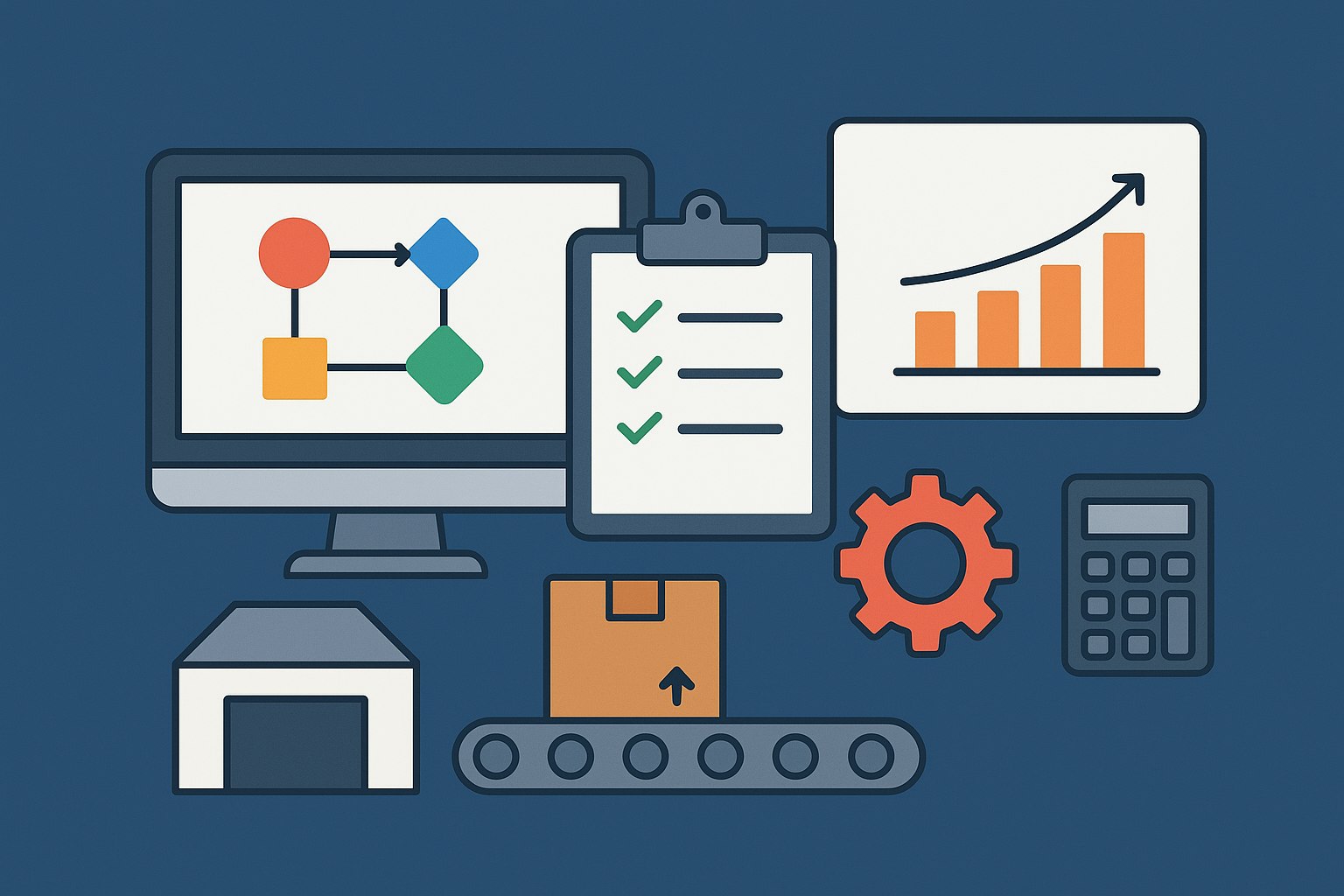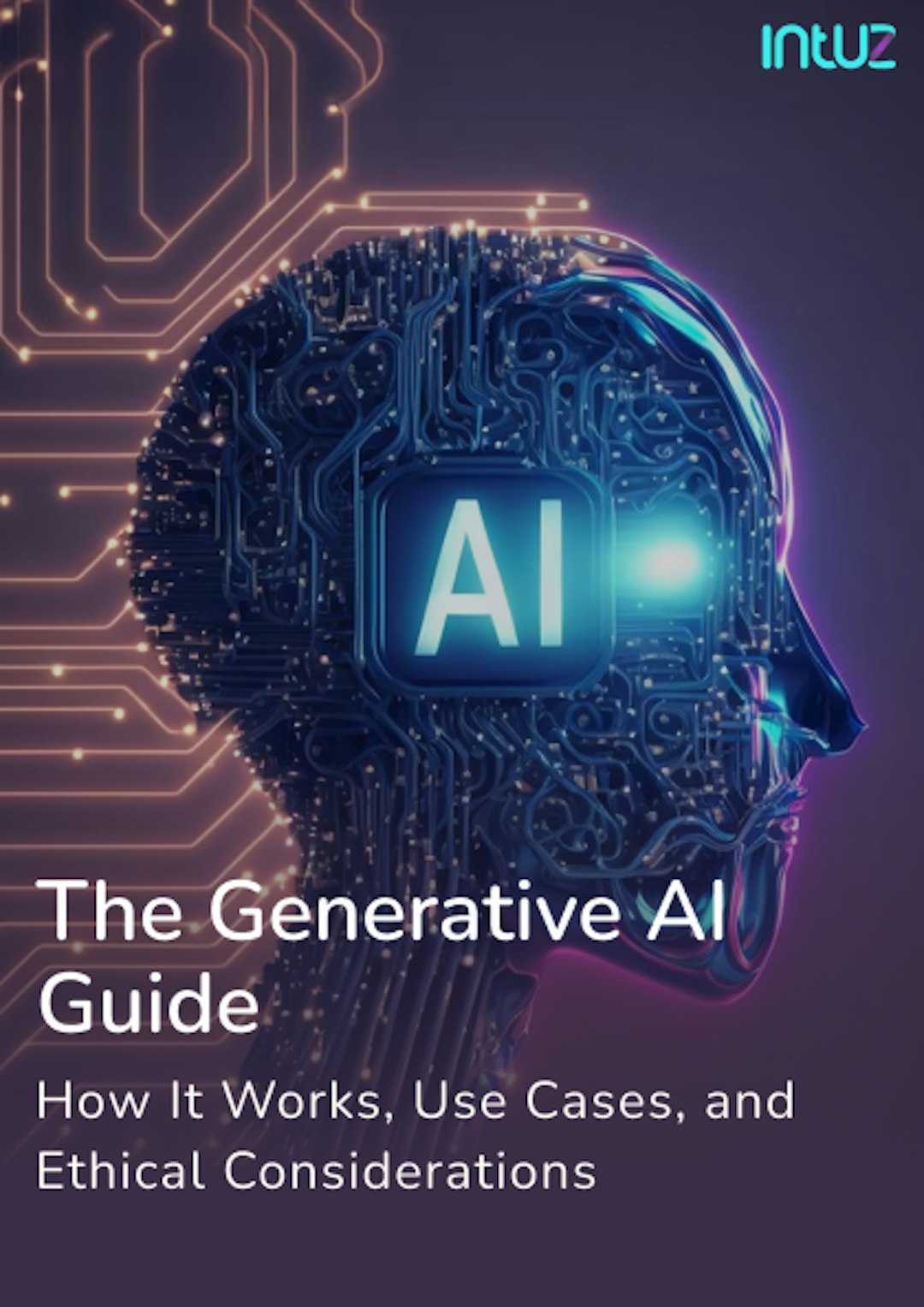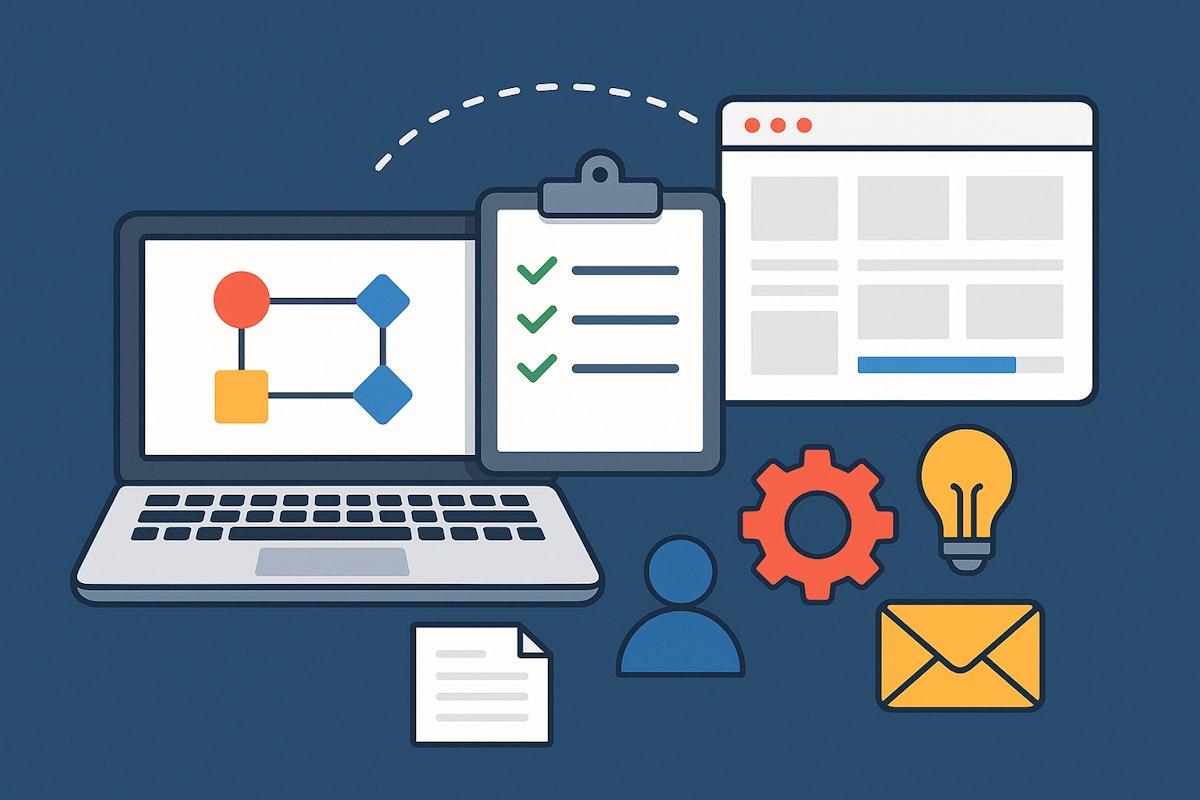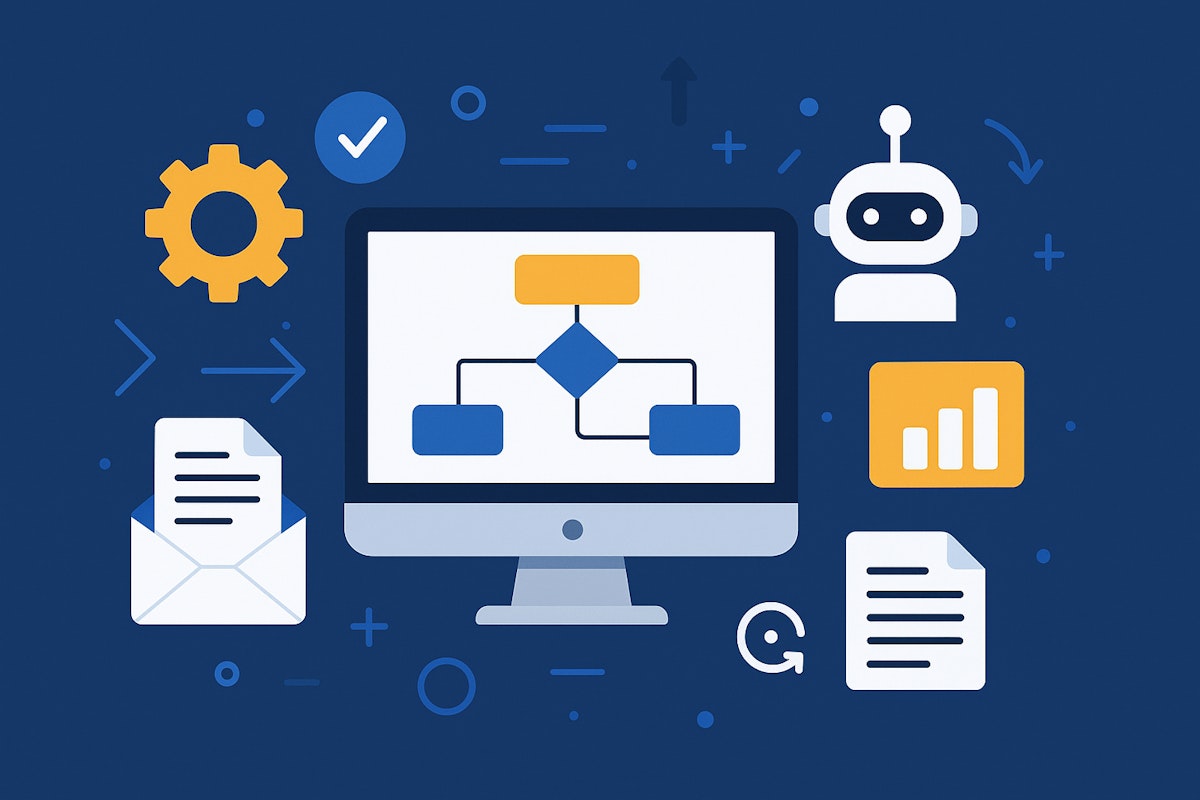Table of Content
Modern supply chains are under constant pressure — volatile demand, rising logistics costs, and fragmented data systems make operational efficiency harder than ever. Traditional ERP and legacy software can’t always keep up with the speed and flexibility today’s businesses demand.
That’s why no-code and low-code automation platforms are becoming essential.
Let's explore the best tools for supply chain optimization — outlining their real-world use cases, integrations, pricing insights, and ideal business fit — so you can make the right choice for your automation journey.
Top 10 Tools for Automating Supply Chain Optimization Workflow
1. Microsoft Power Platform
Microsoft’s Power Platform (Power Automate + Power Apps + Power BI) helps supply chain teams connect ERP, warehouse, and procurement systems while automating repetitive workflows — all within a familiar Microsoft ecosystem.
Use Cases:
- Trigger automatic purchase orders when stock hits a threshold
- Connect Teams notifications for shipment delays
- Sync vendor invoices from Dynamics 365 to accounting automatically
- Build real-time inventory dashboards for management visibility
Integration Capabilities:
Deep integration with Microsoft 365, Dynamics 365, SharePoint, SAP, Salesforce, and over 500 connectors for logistics, procurement, and finance platforms.
| Aspects | Details |
|---|---|
| Key Strengths / Features | Seamless Microsoft integration, AI Builder for demand forecasting, real-time Power BI dashboards, and a low learning curve for citizen developers. |
| Limitations / Gaps | Non-Microsoft integrations may require premium connectors, and complex workflows can incur high per-flow costs. |
| Pricing Insight | Pay-per-user or per-flow pricing; affordable for small workflows, but can scale up for enterprise use. |
| Best For | Companies already using the Microsoft ecosystem are seeking quick, reliable workflow automation. |
20+ Best n8n Workflow Automation Templates for Small Businesses
Explore Now2. Quixy
A powerful no-code BPM platform that enables logistics, manufacturing, and retail teams to design and automate processes like supplier onboarding, purchase approvals, and warehouse management without developer dependency.
Use Cases:
- Automate purchase request and approval workflows
- Digitize supplier compliance documentation
- Track inbound/outbound shipments in real time
- Route exceptions to the relevant departments automatically
Integration Capabilities:
Works with SAP, Oracle, Odoo, Google Sheets, and supports APIs/webhooks for custom ERP and warehouse integration.
| Aspects | Details |
|---|---|
| Key Strengths / Features | Drag-and-drop app builder, role-based access, visual dashboards, process templates for procurement & logistics. |
| Limitations / Gaps | Limited AI/ML capabilities; advanced analytics may need Power BI or Tableau integration. |
| Pricing Insight | Tiered per-user pricing; affordable for SMBs; enterprise customizations available. |
| Best For | Businesses are aiming to digitize manual workflows and reduce dependency on IT teams. |
AI-Powered Reverse Logistics Automation for E-commerce
Explore Now3. Knack
Knack lets supply chain teams build simple database-driven web apps — ideal for creating internal supplier dashboards, tracking inventories, or managing delivery partners without coding.
Use Cases:
- Create a centralized supplier and shipment tracking portal
- Manage purchase orders and payment milestones
- Generate automatic reports on stock movements and lead times
Integration Capabilities:
Integrates with Zapier, Make, Google Sheets, QuickBooks, and custom REST APIs.
| Aspects | Details |
|---|---|
| Key Strengths / Features | Fast app building, custom dashboards, great database management, and strong role-based permissions. |
| Limitations / Gaps | Not ideal for complex logistics or predictive analytics; relies on external tools for AI/forecasting. |
| Pricing Insight | Starts at SMB-friendly rates; cost rises with user count and data volume. |
| Best For | Smaller supply chains need visibility tools and data centralization without IT overhead. |
4. Zapier
Zapier is one of the most popular no-code workflow automation tools, ideal for connecting disconnected systems like ERP, CRM, shipping APIs, and email platforms to automate supply chain communication and reporting.
Use Cases:
- Auto-send purchase order confirmations from ERP to supplier email
- Update inventory levels in Google Sheets after each delivery
- Notify logistics teams via Slack or Teams on shipment status
- Sync supplier invoices into accounting software automatically
Integration Capabilities:
Integrates with 7,000+ apps — including SAP, NetSuite, QuickBooks, Shopify, Slack, Gmail, and warehouse management systems via webhooks.
| Aspects | Details |
|---|---|
| Key Strengths / Features | Huge connector library, easy setup, reliable triggers and actions, ideal for quick automation. |
| Limitations / Gaps | Limited for complex logic or bulk data handling; lacks native analytics. |
| Pricing Insight | Free tier for small tasks; paid plans scale with automation runs and feature limits. |
| Best For | SMEs need fast, lightweight workflow automation across multiple systems. |
How to Automate B2B Lead Generation Using N8n
Explore Now!5. Blaze Tech
Blaze Tech is a modern no-code platform that helps teams create internal tools and supply chain management apps — from order tracking portals to vendor dashboards — using visual logic and database integrations.
Use Cases:
- Build a supplier onboarding and compliance tracking app
- Create inventory visibility dashboards
- Auto-update warehouse stock when orders are fulfilled
- Integrate quality inspection reports into the central system
Integration Capabilities:
Connects with REST APIs, Google Sheets, Airtable, HubSpot, and CRMs. Offers backend logic and custom database schema.
| Aspects | Details |
|---|---|
| Key Strengths / Features | Clean UI builder, database flexibility, supports custom business logic, and scalable app hosting. |
| Limitations / Gaps | Fewer built-in connectors than Zapier/Make; may require API setup for ERP systems. |
| Pricing Insight | Subscription tiers based on app complexity and user count; free trial available. |
| Best For | Teams wanting to build internal logistics or procurement tools without coding. |
6. Nutrient
Nutrient is a modern no-code automation platform tailored for manufacturing and supply chain visibility — ideal for streamlining procurement, quality checks, and real-time logistics tracking.
Use Cases:
- Connect warehouse sensors to dashboards
- Trigger supplier replenishment automatically
- Automate inventory health alerts and reorder logic
Integration Capabilities:
Supports REST APIs, Excel/Sheets, ERP systems, IoT data feeds, and third-party apps.
| Aspects | Details |
|---|---|
| Key Strengths / Features | Real-time dashboards, IoT data integration, workflow builder, alerts & KPI tracking. |
| Limitations / Gaps | Newer platform; fewer off-the-shelf connectors compared to enterprise tools. |
| Pricing Insight | Flexible pay-per-use model; good for scaling manufacturing SMEs. |
| Best For | Mid-sized manufacturers seeking IoT-connected workflow automation. |
6. Appian
Appian is an enterprise-grade low-code automation platform that unifies workflow, RPA, and AI capabilities — excellent for complex supply chain orchestration across procurement, inventory, and compliance.
Use Cases:
- Integrate ERP, CRM, and logistics data for unified tracking
- Automate purchase order routing and approvals
- Predict disruptions and trigger risk alerts using AI
- Maintain full audit trails for compliance
Integration Capabilities:
Built-in connectors for SAP, Oracle, AWS, Azure, Salesforce, and third-party REST APIs.
| Aspects | Details |
|---|---|
| Key Strengths / Features | Scalable automation, built-in RPA + AI, case management, process mining tools. |
| Limitations / Gaps | Requires professional implementation; pricing is higher than SMB tools. |
| Pricing Insight | Enterprise subscription model; custom quote based on automation scale. |
| Best For | Large enterprises are optimizing complex global supply chain networks. |
8. Monday.com
Monday.com is a versatile low-code work management platform that helps supply chain teams plan, track, and automate workflows — ideal for visualizing procurement and logistics operations.
Use Cases:
- Manage purchase order pipelines visually
- Assign tasks for inbound/outbound shipment processing
- Track supplier communication and delivery milestones
- Build dashboards for SLA monitoring
Integration Capabilities:
Integrates with SAP, Salesforce, Slack, Outlook, Excel, and 200+ business apps via API or Zapier.
| Aspects | Details |
|---|---|
| Key Strengths / Features | Intuitive boards, automation recipes, reporting dashboards, timeline/Gantt tracking. |
| Limitations / Gaps | Not a full process engine; deeper ERP integration needs external tools. |
| Pricing Insight | Per-seat pricing with automation limits; affordable for mid-sized teams. |
| Best For | Teams seeking visibility and collaboration across procurement and logistics workflows. |
9. Airtable
Airtable blends spreadsheet simplicity with database power — perfect for centralizing supply chain data, tracking SKUs, managing suppliers, and automating notifications.
Use Cases:
- Track inventory and reorder levels dynamically
- Automate reminders for delayed shipments
- Create supplier performance dashboards
- Link purchase orders with payment status
Integration Capabilities:
Works with Zapier, Make, Power Automate, and REST API. Integrates easily with Slack, Gmail, and major ERP systems.
| Aspects | Details |
|---|---|
| Key Strengths / Features | Database + spreadsheet flexibility, automation triggers, templates for inventory & logistics. |
| Limitations / Gaps | Not ideal for complex workflows; automation runs are limited per plan. |
| Pricing Insight | Free basic plan; business plans add automations and extensions. |
| Best For | Businesses need data transparency and quick automation inside a familiar spreadsheet-style interface. |
10. Make (formerly Integromat)
Make offers advanced visual workflow automation for supply chains, connecting ERPs, logistics APIs, CRMs, and analytics platforms to streamline data flow and reduce manual updates.
Use Cases:
- Sync order data from Shopify to ERP in real-time
- Auto-alert suppliers for low inventory levels
- Route delivery status updates to customer service dashboards
- Generate reports combining logistics and financial data
Integration Capabilities:
Supports 1,500+ native apps plus REST and JSON webhooks for custom integration with SAP, NetSuite, and TMS platforms.
| Aspects | Details |
|---|---|
| Key Strengths / Features | Visual scenario builder, conditional logic, multi-step automations, and strong data transformation tools. |
| Limitations / Gaps | Not ideal for AI-driven or predictive analytics workflows; complex scenarios require optimization. |
| Pricing Insight | Free tier available; usage-based pricing by operation count; affordable for SMEs. |
| Best For | Mid-size operations integrating multiple systems with advanced workflow logic. |
Quick Comparison: Which No-Code Tool Fits Your Supply Chain Needs Best?
| Tools | Core focus | Ideal Use Cases | Pricing Level | Best For |
|---|---|---|---|---|
| Zapier | Workflow automation | Cross-system integration | $ | SMEs |
| Make | Visual automation builder | Data integration + multi-step flows | $$ | SMEs–Mid |
| Power Automate | Enterprise workflow automation | Microsoft users | $$ | Mid–Large |
| Blaze Tech | App builder | Custom supply chain tools | $$ | SMEs |
| Quixy | BPM & workflow automation | Procurement workflows | $$ | Mid-size |
| Appian | Enterprise-grade low-code | End-to-end orchestration | $$$ | Enterprises |
| Knack | Database-driven apps | Data centralization | $ | SMEs |
| Monday.com | Work management | Logistics & collaboration | $$ | Teams |
| Airtable | Spreadsheet automation | Supplier data tracking | $ | SMEs |
| Nutrient | IoT + automation | Manufacturing workflows | $$ | SMEs |
Let's get started and build a smarter supply chain automation with Intuz
Even the best no-code or low-code tools require a well-designed integration strategy and automation to deliver a measurable ROI. That’s where our experts at Intuz step in.
We help manufacturing, logistics, and retail businesses:
- Value-driven consultation regarding the selection of the right tools that actually fit your business.
- Design intelligent supply chain workflows using no-code/low-code tools
- Integrate ERP, WMS, CRM, and analytics platforms seamlessly
- Leverage AI for forecasting, inventory optimization, and workflow insights
- Ensure scalability, security, and compliance across operations
Whether you’re exploring Zapier for quick automation or Microsoft Power Automate for enterprise-scale workflows, our specialists can help you choose, implement, and optimize the right setup — fast.
Get a Free 30-Minute Consultation
We will discuss your current supply chain challenges and discover how automation can reduce costs, eliminate manual errors, and improve delivery performance.






